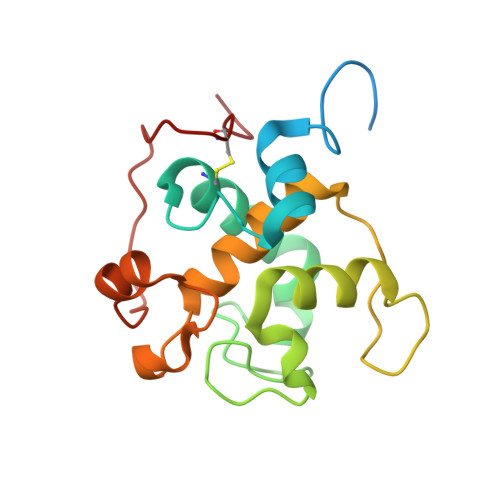The 1.6A X-Ray Structure of the Unusual C-Type Cytochrome, Cytochrome Cl, from the Methylotrophic Bacterium Methylobacterium Extorquens.
Williams, P.A., Coates, L., Mohammed, F., Gill, R., Erskine, P.T., Wood, S.P., Anthony, C., Cooper, J.B.(2006) J Mol Biol 357: 151
- PubMed: 16414073
- DOI: https://doi.org/10.1016/j.jmb.2005.12.055
- Primary Citation of Related Structures:
2C8S - PubMed Abstract:
The structure of cytochrome cL from Methylobacterium extorquens has been determined by X-ray crystallography to a resolution of 1.6 A. This unusually large, acidic cytochrome is the physiological electron acceptor for the quinoprotein methanol dehydrogenase in the periplasm of methylotrophic bacteria. Its amino acid sequence is completely different from that of other cytochromes but its X-ray structure reveals a core that is typical of class I cytochromes c, having alpha-helices folded into a compact structure enclosing the single haem c prosthetic group and leaving one edge of the haem exposed. The haem is bound through thioether bonds to Cys65 and Cys68, and the fifth ligand to the haem iron is provided by His69. Remarkably, the sixth ligand is provided by His112, and not by Met109, which had been shown to be the sixth ligand in solution. Cytochrome cL is unusual in having a disulphide bridge that tethers the long C-terminal extension to the body of the structure. The crystal structure reveals that, close to the inner haem propionate, there is tightly bound calcium ion that is likely to be involved in stabilization of the redox potential, and that may be important in the flow of electrons from reduced pyrroloquinoline quinone in methanol dehydrogenase to the haem of cytochrome cL. As predicted, both haem propionates are exposed to solvent, accounting for the unusual influence of pH on the redox potential of this cytochrome.
Organizational Affiliation:
School of Biological Sciences, University of Southampton, Bassett Crescent East, Southampton SO16 7PX, UK.
















